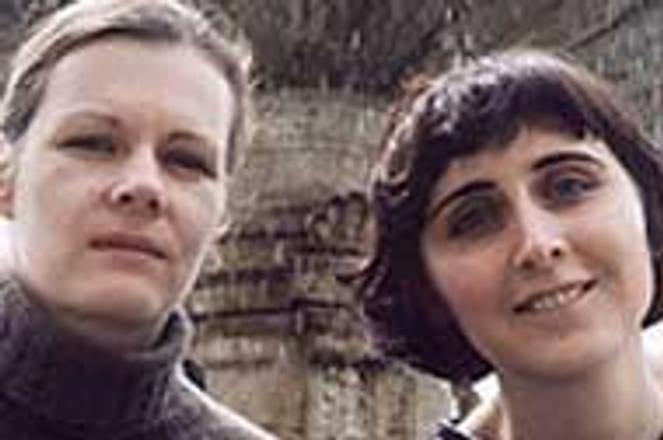Art theorists Alexandra Kusá (left) and Petra Hanáková decided to tattoo visitors to the Venice Biennial with Slovak designs.photo:Courtesy of "Slovak Art for Free" curators
Like seeds on the wind, the designs of Slovak artists are travelling around the world borne by a unique fine art medium: the arms and legs of international visitors to this year's Venice Biennial.
In the functionalist Czechoslovak exhibit hall, built in 1926, a team of Slovak artists are tattooing a wide range of Slovak designs onto visiting patrons who request them. In the process, they are redefining the Slovak definition of fine art and stirring up a bit of controversy as they blur the lines between private and public display.
The daring and memorable exhibit is the brainchild of Petra Hanáková and Alexandra Kusá, two young Bratislava curators and graduates of the Comenius University's Philosophical Faculty in Fine Art Theory. The women were chosen above 10 other teams by the Ministry of Culture to represent Slovakia at this year's Venice show.
The exhibit, Hanáková explained in an interview, is a direct response to this year's Biennial theme: "Openness about everything and openness to everyone - Past, Present, and Future." To organise the exhibit, called "Slovak art for free," she and her partner asked 46 Slovak artists to contribute designs which could be transformed into tattoos. They then found three expert tattoo artists who agreed to work at the Biennial and give the tattoos for free.
Traditional forms of Slovak art, said Hanáková, have been broken by the post-modern age. "Tattooing is a special form of distribution of Slovak art as everybody can wear it and the audience seems to accept it. The body has changed to become the medium of art," she said.
Dozens of patrons have so far gotten the tattoos, which, Hanáková said, seem to be most popular among young Asian women. Arms, necks, backs, and legs can be marked. The most popular designs are the geometric motifs by Denisa Lehotská , followed by the erotic motifs of Juraj Bartuzs, various designs by Laco Teren, scar lines by Imro Vaško, and mystical markings by Rudolf Fila. A unique design, which is actually three signatures of Slovak modern artists, is also popular. After the work is complete, all of the tattoos are photographed and exhibited on the surrounding walls.
Under the needle. A visitor to the Venice Biennial has a straight line tattooed on his back. The popular design is entitled "scar."photo: Courtesy of "Slovak Art for Free"
Hanáková said that the idea met a lot of criticism as some called the project a presentation of "unserious art", "kitsch", "banal aesthetics" or art for "dirty people," as in Slovakia the tattoo is considered. But the originality of the idea triumphed.
"It is interesting that Slovak artists agreed to present not such a serious art form...But through this act, Slovak contemporary art becomes popular and wanted," she said.
The unique art form also brings up the question of who the real artist is in the endevour. "The question of "ownership" is problematic. Who is the artist; the curator who made up the idea, the artist who designed the tattoo or finally the tattoo man?" she asked.
The Slovak exhibit is one of dozens at the prestigious 48th international exhibition of contemporary art. Creative and controversial paintings, sculptures, video-installations and interactive art can be enjoyed at the festival until it closes November 7.
The Slovak Ministry of Culture, Soros Centre of Contemporary Art in Bratislava and Soga, an auction company, are supporting the tattoo project to the tune of one million crowns. Tattoos are given in a sterile environment by appointment, which can usually be made on the same day, Hanáková said.


